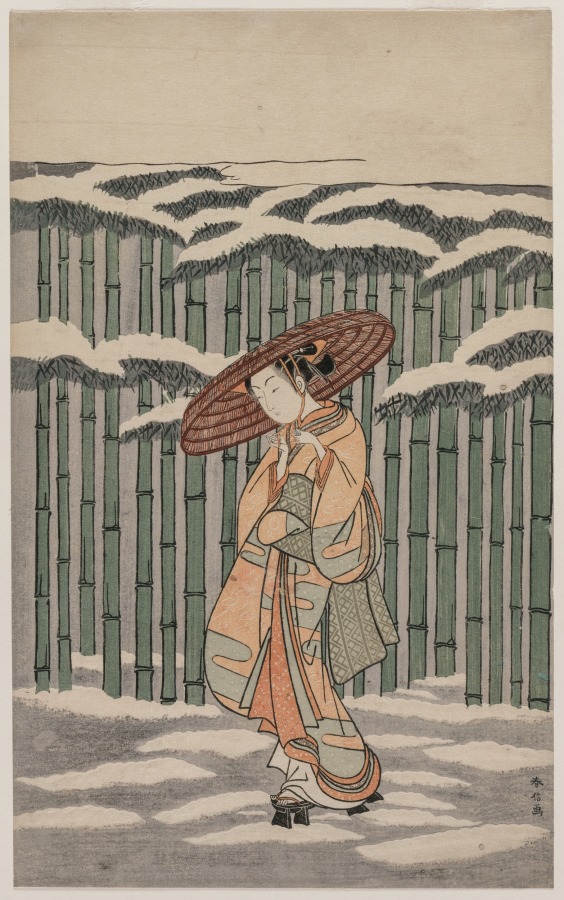| schema:description 11 | "type: Print" |
| schema:description | "id: 111624" |
| schema:description | "technique: color woodblock print" |
| schema:description | "wall_description: The first state of this print was privately issued as a calendar print for 1766, with the months of the year depicted in the woman's sash. It was illegal to sell any type of calendar without a government license, and this print is a later state with the calendar replaced with a checked pattern so that the print could be sold commercially....(more)" |
| schema:description | "collection: Japanese Art" |
| schema:description | "culture: Japan, Meiji period (1868-1912)" |
| schema:description | "measurements: Sheet: 34.7 x 21.3 cm (13 11/16 x 8 3/8 in.)" |
| schema:description | "creditline: Bequest of Edward L. Whittemore" |
| schema:description | "digital_description: The young woman in this print likely stands in for Meng Zong, one of the Chinese Twenty Four Paragons of Filial Piety. Legend has it he went out in the dead of winter to dig bamboo shoots for his aged parents. Harunobu designed a calendar print for the year 1765 with a more explicit allusion to the theme. It shows a young woman actively digging for bamboo shoots. The first state of this print was privately issued as a calendar print for 1766, with the months of the year depicted in the woman's sash. It was illegal to sell any type of calendar without a government license, and a second state with the calendar replaced with a checked pattern was produced so that the print could be sold commercially. This print is several centimeters taller than the original, which together with its bright colors, indicates that it is a later reproduction....(more)" |
| schema:description | "inscription: Signature: Harunobu ga" |
| schema:description | "tombstone: Passing the Bamboo Grove, 1868-1912. Suzuki Harunobu (Japanese, 1724-1770). Color woodblock print; sheet: 34.7 x 21.3 cm (13 11/16 x 8 3/8 in.). The Cleveland Museum of Art, Bequest of Edward L. Whittemore 1930.176...(more)" |

